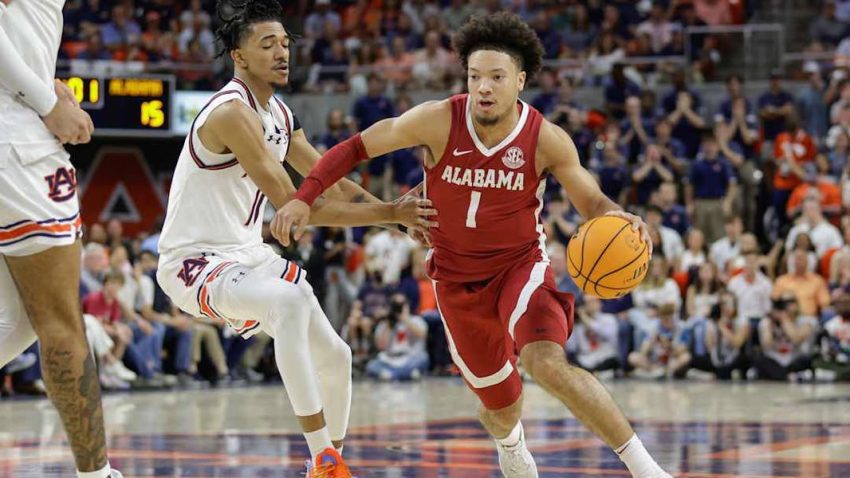Understanding the Challenge: Why Alabama is a Tough Sweet 16 Opponent for BYU
Get to know BYU’s Sweet 16 rival, the Alabama Crimson Tide.
BYU has reached the Sweet 16 for the first time since the Jimmer Fredette era, but their next challenge comes against a powerful Alabama squad. The Crimson Tide is led by AP First Team All-American Mark Sears, who is putting up 18.7 points, 3.0 rebounds, and 4.9 assists per game. Surrounding Sears, Alabama boasts several other significant scoring threats.
Alabama stands as one of the most statistically comparable teams to BYU that they’ve faced in the tournament. According to KenPom rankings, BYU has an adjusted offensive rating of 124.2 (ranked 9th nationally), while Alabama is just ahead at 126.7 (ranked 4th). Both teams love to shoot, particularly from long range. Alabama ranks 14th in the nation, attempting 29.2 three-pointers per game, while BYU ranks 24th with 28.5 attempts per game.
Should this worry the Cougars? It’s definitely something they will need to address.
BYU only encountered one team with a similar offensive profile this season—Texas Tech. The Red Raiders have an adjusted offensive rating of 125.4, just below Alabama’s rating, ranking 5th nationally. They also average 27.2 three-point attempts per game. BYU fell to Texas Tech in a 72-67 game on January 7th, where the Red Raiders shot 10-28 from beyond the arc, while BYU only made 5-23.
If shooting performances like that repeat themselves, BYU might be sent back to Provo early.
Another issue Alabama presents is their fast tempo. The Tide lead the nation in pace and possessions per game. BYU hasn’t faced any teams in the top 30 for pace, with only one opponent in the top 50—Oklahoma State, whom BYU easily defeated. However, comparing Oklahoma State to Alabama isn’t fair in terms of caliber.
BYU is known for its preference to slow down the game and control it in the half-court. They sit at 145th in possessions per game, placing them around the middle of the pack. This upcoming game will likely require a major adjustment. In my opinion, BYU should focus on dictating the game’s pace and preventing Alabama from getting into their high-speed rhythm.
Often when one team plays fast, the opposing team tries to match that pace. However, BYU cannot afford to fall into this trap, as Alabama will capitalize on their speed and length in transition. BYU’s best chance is to control the tempo, which will help neutralize Alabama’s explosive offense.
Alabama represents the toughest test BYU has encountered in the tournament, and defeating them will require an extraordinary effort, but it promises to be an exciting game. This could very well be the first time both teams exceed 100 points in a game.
